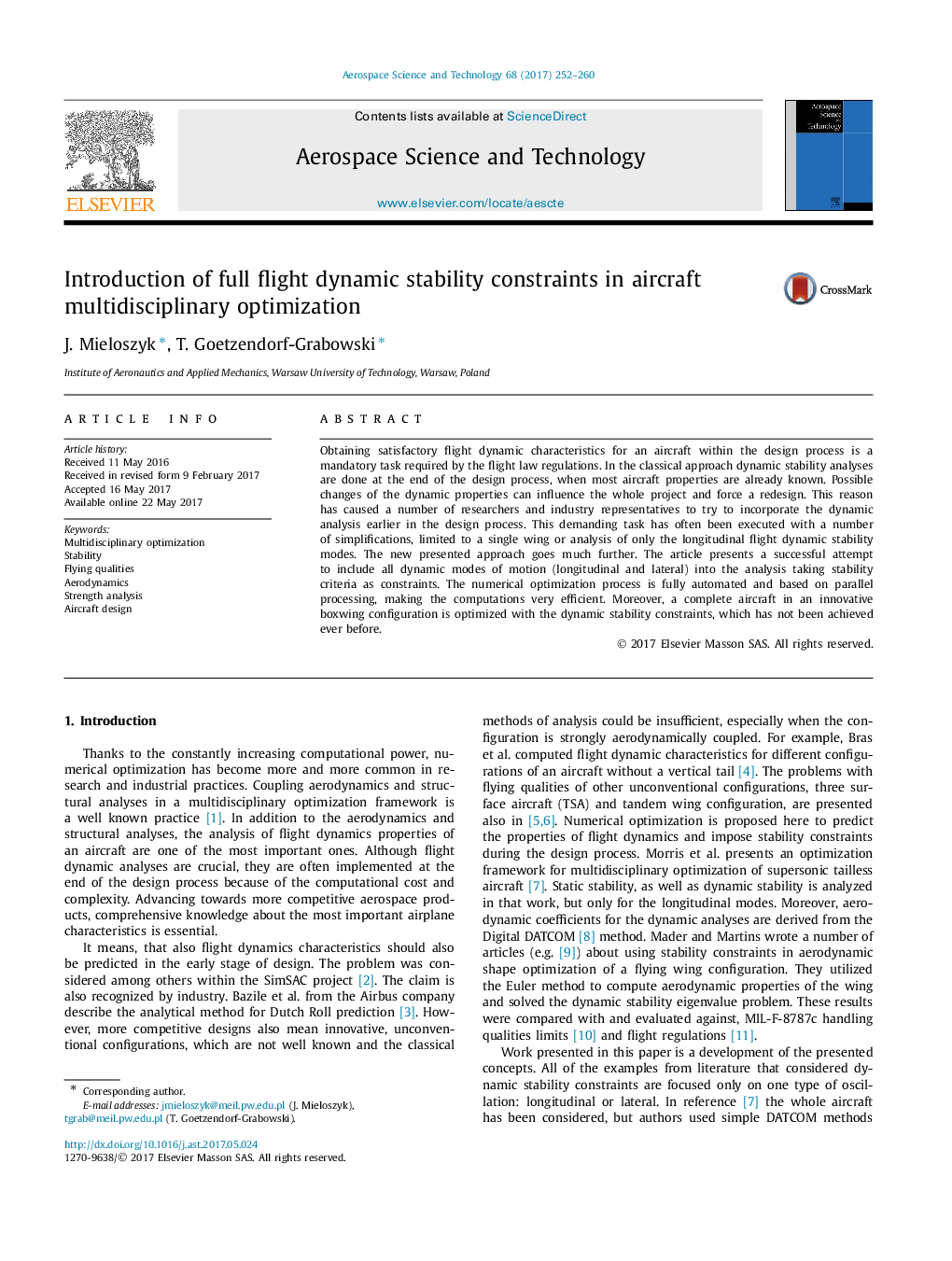| Article ID | Journal | Published Year | Pages | File Type |
|---|---|---|---|---|
| 5472910 | Aerospace Science and Technology | 2017 | 9 Pages |
Abstract
Obtaining satisfactory flight dynamic characteristics for an aircraft within the design process is a mandatory task required by the flight law regulations. In the classical approach dynamic stability analyses are done at the end of the design process, when most aircraft properties are already known. Possible changes of the dynamic properties can influence the whole project and force a redesign. This reason has caused a number of researchers and industry representatives to try to incorporate the dynamic analysis earlier in the design process. This demanding task has often been executed with a number of simplifications, limited to a single wing or analysis of only the longitudinal flight dynamic stability modes. The new presented approach goes much further. The article presents a successful attempt to include all dynamic modes of motion (longitudinal and lateral) into the analysis taking stability criteria as constraints. The numerical optimization process is fully automated and based on parallel processing, making the computations very efficient. Moreover, a complete aircraft in an innovative boxwing configuration is optimized with the dynamic stability constraints, which has not been achieved ever before.
Keywords
Related Topics
Physical Sciences and Engineering
Engineering
Aerospace Engineering
Authors
J. Mieloszyk, T. Goetzendorf-Grabowski,
